Digital Poster
AI-Powered Dynamic MRI
ISMRM & ISMRT Annual Meeting & Exhibition • 10-15 May 2025 • Honolulu, Hawai'i

 |
Computer Number: 1
4127. Towards
Deep Learning-Driven Assessment of Lesion Biopsy in Breast MRI
L. Fay, S. Schmidt, B. Yang, M. Winkelmann, T. Kuestner, F.
Peisen
Medical Image and Data Analysis (MIDAS.lab), Department of Diagnostic and Interventional Radiology, University Hospital of Tuebingen, Tuebingen, Germany
Impact: This study introduces a real-time MR-guided
breast biopsies tracking system, enhancing localization
accuracy of lesions, position-markers, and needle-tips. This
approach aims to improve patient outcomes, optimize breast
cancer diagnostic confidence, and reduce the need for
follow-up examinations.
|
|
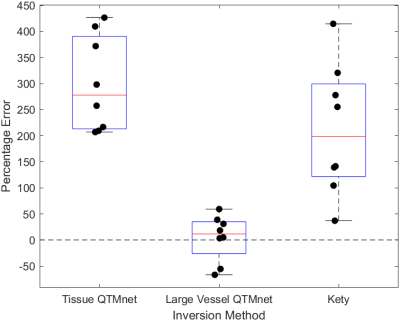 |
Computer Number: 2
4128. Removing
Large Vessels is Essential for the Accurate Estimation of Tissue
Flow
D. Romano, Q. Zhang, A. Roberts, B. Weppner, R. Hu, T.
Nguyen, P. Spincemaille, Y. Wang
Cornell University, Ithaca, United States
Impact: We show that large vessel flow must be removed
from tissue perfusion maps. In QTMnet, which trains a deep
learning model on synthetic data to obtain blood flow, this
can be achieved with large vessel augmentations of the
training data.
|
|
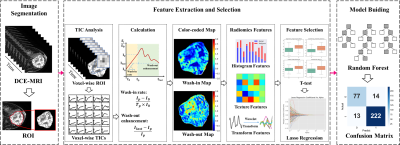 |
Computer Number: 3
4129. Radiomics
of Voxel-Wise DCE-MRI Wash-In and Wash-Out Maps Enable
Quantitative Assessment of Hemodynamic Heterogeneity within
Breast Lesions
K. Chen, Y. Ren, M. Wang, J. Wen, B. Han, W. Cui, D. Luo, Q.
Wan, Z. Liu, N. Zhang
Shenzhen Institute of Advanced Technology, Chinese Academy of Sciences, Shenzhen, China
Impact: This novel approach provides an intuitive and
self-explainable visualization and quantification of spatial
and temporal hemodynamic heterogeneity, with potential
applications across a broader range of clinical settings.
|
|
 |
Computer Number: 4
4130. 4D
Flow MRI Velocity Enhancement and Unwrapping Using
Divergence-Free Neural Networks

J. Bisbal, J. Sotelo, H. Mella, J. Mura, P. Irarrazaval,
C. Tejos, S. Uribe
Pontificia Universidad Catolica de Chile, Santiago, Chile
Impact: We proposed an unsupervised divergence-free
neural network that effectively enhances the signal-to-noise
ratio and reduces velocity wrapping artifacts in 4D Flow
MRI, improving its accuracy and reliability in both clinical
and research settings
|
|
 |
Computer Number: 5
4131. High
Precision Deep learning 4D MRA Vessel Segmentation: Technical
Development and Initial Clinical Evaluation on Arteriovenous
Malformation

S. H. Chung, Z. Wang, T. Zhao, J. Tang, Y. He, S.
Ansari, C. Krumpelman, L. Yan
Northwestern University, Chicago, United States
Impact: This work developed a 4DST U-Net for 4D MRA
vessel segmentation with minimal preprocessing. The
generalizability of this neural network was demonstrated by
the external validation on patients. Both features may
facilitate a wider application of this technique across
multi-sites.
|
|
 |
Computer Number: 6
4132. Deep
Learning based Vessel Suppression on Contrast Enhanced Brain MRI
Images
S. Pasumarthi, A. Shankaranarayanan
Subtle Medical Inc, Menlo Park, United States
Impact: The proposed method paves the way for a novel
post-processing way of achieving vessel suppression without
having to rescan with specialized imaging protocols. This
algorithm will be impactful for cases with small lesions
like metastases.
|
|
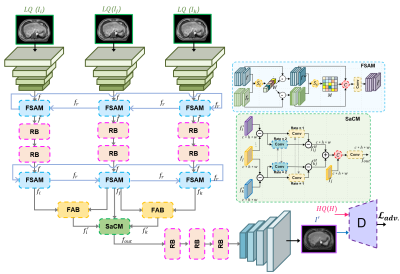 |
Computer Number: 7
4133. Multi-Frame
Compensated Super-Resolution for High Spatiotemporal Abdominal
4D-MRI
Y. Wang, L. Wang, T. Li, J. Cai
The Hong Kong Polytechnic University, Hong Kong, Hong Kong
Impact: MCRNet significantly improves 4D-MRI quality by
achieving high spatiotemporal resolution, reducing noise and
artifacts, and restoring anatomical structures.
|
|
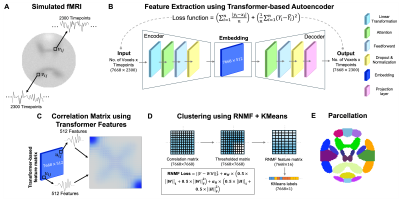 |
Computer Number: 8
4134. TReND:
Transformer derived features and regularized NMF for neonatal
functional network delineation
S. Mohapatra, M. Ouyang, L. Sun, Y. He, H. Huang
Children's Hospital of Philadelphia, Philadelphia, United States
Impact: We established TReND, a novel and robust
framework, for neonatal functional network delineation.
TReND-derived neonatal functional networks could serve as a
neonatal functional atlas for perinatal populations in
health and disease.
|
|
 |
Computer Number: 9
4135. Deep
learning assisted detection of chronic lung allograft
dysfunction using pulmonary DCE-MRI
K. C. Ma, X. He, A. Susnjar, M. H. Pierre-Louis, S. Montesi,
F. Liu, I. Zhou
Massachusetts General Hospital and Harvard Medical School, Boston, United States
Impact: This deep learning approach effectively combines
spatial, depth, and temporal information from 3D DCE-MRI,
offering a promising tool for enhancing CLAD diagnostic
precision.
|
|
 |
Computer Number: 10
4136. Multiparametric
MRI Model with DCE-MRI and ADC map Enables Accurate Prediction
of Benign and Malignant Breast Lesions
y. chen, c. Luo, L. Wang, r. luo, h. liu, d. wang
Xinhua Hospital Affiliated to Shanghai Jiao Tong University School Of Medicine, Shanghai, China
Impact: The DL model based on multiparametric MRI
achieved high accuracy for distinguishing benign and
malignant breast lesions and showed the potential for future
application as a new tool for clinical diagnosis.
|
|
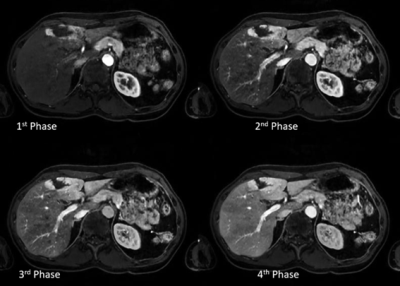 |
Computer Number: 11
4137. Quadruple
arterial phase dynamic EOB imaging using a novel DL
reconstruction visualizing aortic wax and wane phenomenon:
preliminary results
K. Sato, S. Tanaka, R. Murayama, Y. Takayama, A. Nozaki, X.
Zhu, T. Cashen, A. Guidon, T. Wakayama, K. Yoshimitsu
Fukuoka University, Fukuoka prefecture, Japan
Impact: DLS-DCE provides high quality liver DCE images
with higher temporal resolution, revealing detailed
hemodynamic change of the liver, features like the aortic
wax-and-wane phenomenon. This advancement would help
radiologists assess liver lesions more accurately,
benefitting clinical decision-making and patient outcomes.
|
|
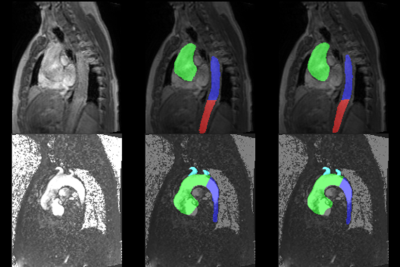 |
Computer Number: 12
4138. Automatic
Segmentation of the Aorta and Supra-Aortic Trunks from 4D Flow
MRI
Y. Zhou, A. Barrera-Naranjo, T. Decourselle, D. M.
Marin-Castrillon, B. Presles, M. Delcey, O. Bouchot, J-J
Christophe, A. Lalande
ICMUB laboratory, CNRS 6302, University of Burgundy, Dijon, France
Impact: We proposed an automatic approach to segment the
aorta on different time steps from magnitude images from 4D
flow MRI. Additionally, we presented the outcomes of
segmenting the supra-aortic trunks using phase and magnitude
from the systolic period.
|
|
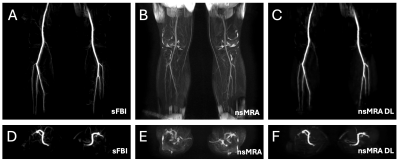 |
Computer Number: 13
4139. Deep
Learning Processing for Non-Contrast Non-Subtraction MR
Angiography of Arteries of the Lower Extremities
W. Bae, A. Mesa, D. Vucevic, Y. Kuwatsuru, H. Jung, V.
Malis, M. Miyazaki
University of California, San Diego, La Jolla, United States
Impact: Our deep learning model effectively depicted
arteries in non-subtraction MRA images, with a potential for
enhancing vascular disease assessment and reducing confusion
for untrained readers by clearly distinguishing arteries
from veins. Further testing is needed for clinical
generalizability.
|
|
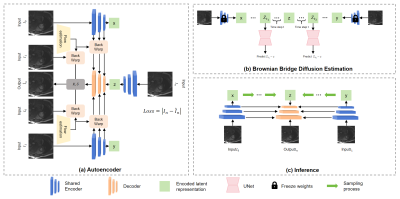 |
Computer Number: 14
4140. Interpolating
Dynamic MRI Images with a Latent Brownian Bridge Diffusion Model
Z. Wen, J. Cheng, Z. Cui, D. Gan, D. Liang
ShanghaiTech University, Shang Hai, China
Impact: The potential Brownian Bridge diffusion model
can predict the intermediate frame with high efficiency and
high quality thanks to the certainty of diffusion. At the
same time, our model is the first application of LDM
architecture in medical image interpolation.
|
|
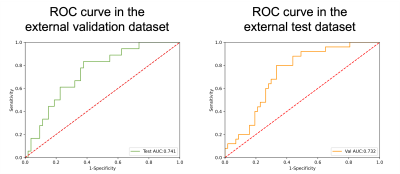 |
Computer Number: 15
4141. Prediction
of traetment response to neoadjuvant chemotherapy in breast
cancer with deep learning for multi-time dynamic
contrast-enhanced MRI
S. Zhang, T. Zhu, Y. Huang, K. Wang, J. Tian, Z. Liu
Institute of Automation, Chinese Academy of Sciences, Beijing, China
Impact:
Our study demonstrated that analyzing longitudinal DCE-MRI data before and after NAC, integrated with deep learning, can effectively predict breast cancer response to neoadjuvant chemotherapy. This approach holds promise for guiding personalized treatment planning. |
The International Society for Magnetic Resonance in Medicine is accredited by the Accreditation Council for Continuing Medical Education to provide continuing medical education for physicians.